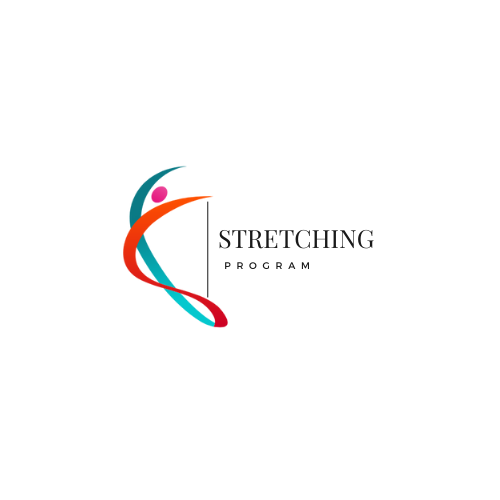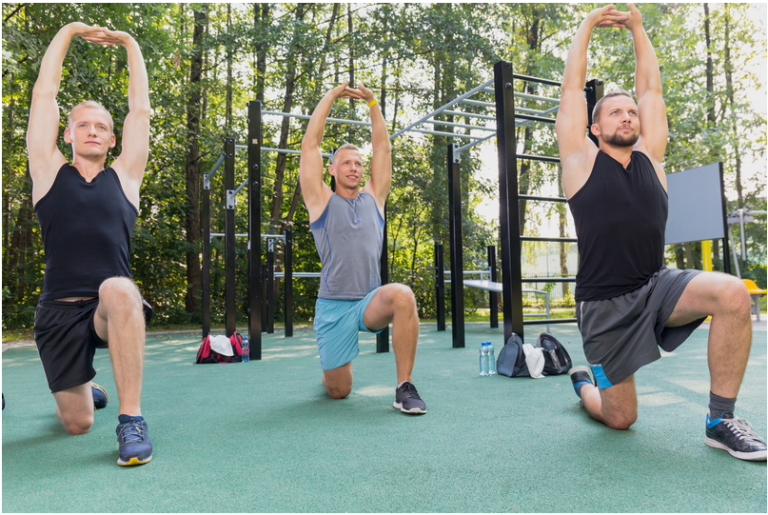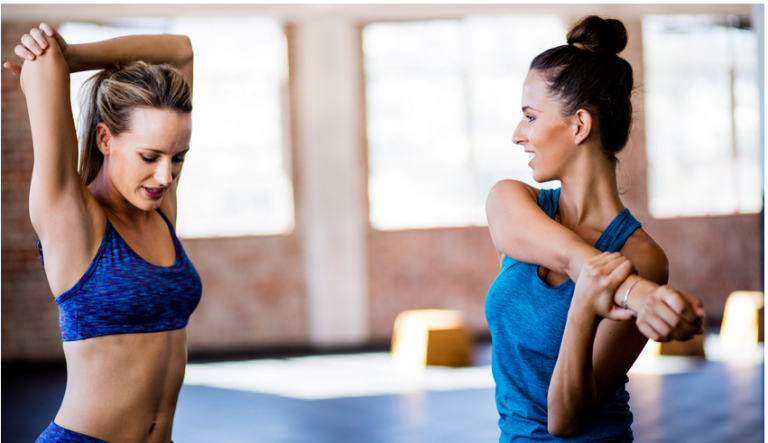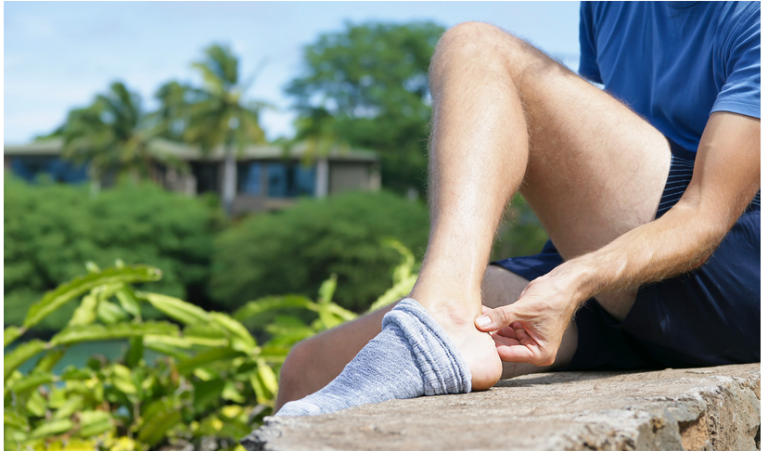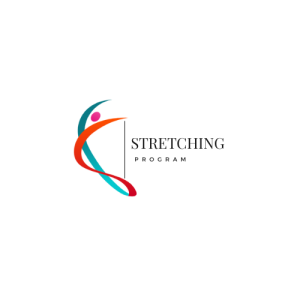
Open Book Stretch: Boost Flexibility and Improve Posture in Minutes
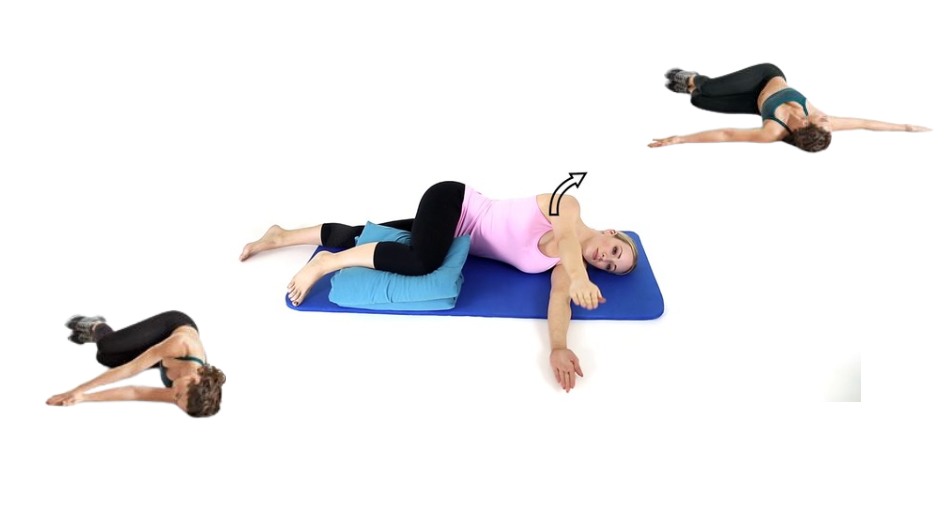
The Open Book Stretch is a highly effective exercise designed to increase mobility and flexibility in the upper back, chest, and shoulders. Often used in physical therapy and Pilates, this stretch can help alleviate stiffness caused by poor posture or extended periods of sitting. By targeting key muscle groups, the Open Book Stretch is an excellent addition to any fitness routine, whether you’re an athlete or simply looking to improve your overall well-being.

One of the many benefits of the Open Book Stretch is its versatility. It can be easily modified to meet the needs of individuals with varying levels of fitness and flexibility. Additionally, it can be incorporated into a larger stretching or workout routine to further enhance its effectiveness. By gaining a deeper understanding of the muscles engaged during the movement and utilizing different variations and progressions, you can tailor the Open Book Stretch to suit your specific goals and needs.
Key Takeaways
- The Open Book Stretch improves upper back, chest, and shoulder mobility.
- It is versatile and can be adapted to different fitness levels and routines.
- Understanding muscle engagement helps maximize the stretch’s effectiveness.
What is Open Book Stretch?
The Open Book Stretch is a static stretching exercise recommended for rehabilitating shoulder injuries. It targets the flexibility of the shoulder’s internal rotator muscles, crucial for activities involving overhead motions. The stretch involves a combination of shoulder abduction and external rotation, followed by horizontal adduction, effectively stretching the internal rotators at the glenohumeral joint.
Regular practice can enhance overhead performance in sports like throwing or striking, help prevent injuries such as anterior instability, and maintain muscle flexibility without compromising conditioning in other muscle groups. This method is part of broader flexibility training, essential for injury prevention and enhancing overall sports performance.
Benefits of the Open Book Stretch
The several key benefits:
Improved Flexibility
The Open Book Stretch is a fantastic exercise to help improve flexibility in your upper body, particularly in the shoulders and back muscles. By performing this stretch consistently, I can increase my shoulder mobility and stability, allowing for an expanded range of motion in my daily activities. Engaging in this stretch also targets my abs, front deltoids, obliques, and waist muscles, further enhancing my overall flexibility.
Enhanced Back Health
Incorporating the Open Book Stretch into my routine benefits my back health in numerous ways. It helps alleviate stiffness and discomfort in my upper back, which is essential if I spend long hours sitting or standing. The act of breathing deeply while performing the stretch also has a positive impact on my back health, as it promotes relaxation and flexibility.
While performing the Open Book Stretch, I am careful not to over-rotate or lift my bottom shoulder, as these mistakes could result in strain or injury. Maintaining proper form and alignment throughout the exercise helps maximize the benefits while also protecting my spine.
If I am new to stretching or looking to diversify my stretching routine, I may explore some of the Best Stretching Books of 2024 to further support my flexibility and back health journey.
By integrating the Open Book Stretch into my fitness plan, I can experience several benefits such as improved flexibility and enhanced back health, which contribute to a better quality of life and overall well-being.
Instructions: How To Execute the Open Book Stretch
Starting Position
To begin the Open Book Stretch exercise, lay on your side with your knees in line with your hips, legs bent, and arms out straight in front of you. Place a small pillow or folded towel under your head for support if needed.
Movement Sequence
First, ensure your knees are in line with your hips and your arms are out straight in front of you. Slowly raise your upper arm upward and over your body, as if you were opening a book. Breathe in as you lift your arm, and exhale as you bring it back down. Repeat this process several times, then switch to your other side and perform the exercise on that side as well.
Common Mistakes
- Not keeping the knees in line with hips: This error can lead to a decrease in the effectiveness of the stretch for your upper body. Ensure that your lower body remains stable by aligning your knees with your hips throughout the exercise.
- Rushing through the movement: It’s important to execute the Open Book Stretch with slow, controlled movements to maximize its benefits. Avoid the temptation to rush through the exercise and focus on deliberate, steady movements.
- Lifting the bottom arm: Make sure to keep your bottom arm on the ground while performing the Open Book Stretch. Lifting it can cause strain on your neck and shoulder muscles and limit the effectiveness of the stretch.
By properly executing the Open Book Stretch, you’ll enjoy increased upper body flexibility and improved shoulder mobility. Ensure that you follow the correct movement sequence, maintain proper form, and avoid common mistakes to get the most out of this effective stretch.
Understanding the Muscular Engagement
Primary Muscles Involved
The Open Book Stretch primarily focuses on improving flexibility and mobility in the upper body. The main muscles targeted in this exercise are the pectoral major and minor (chest muscles) and the thoracic spine (upper back) muscles. As you perform the stretch, you’ll rotate your upper body, which helps to open up and stretch the chest, in turn engaging these muscles 1.
Supporting Muscle Groups
Alongside the primary muscles, several supporting muscles are also involved in the Open Book Stretch. These include the front deltoid (shoulder) and obliques (side abdominal muscles) 2. Additionally, certain stabilization muscles, such as those in your abs and waist, play a role in maintaining proper form during the stretch.
Here’s a breakdown of the muscles involved:
- Primary Muscles: Pectoral Major and Minor, Thoracic Spine Muscles
- Supporting Muscles: Front Deltoid, Obliques, Abs, Waist
To ensure a balanced stretch, it’s important to maintain proper form and pay attention to your breathing. As I perform the Open Book Stretch, I make sure to keep my knees in line with my hips, legs bent, and arms out straight in front of me 3. While practicing this stretch, I focus on slow, deep breaths to help my muscles relax and deepen the stretch.
In summary, the Open Book Stretch engages both primary and supporting muscles to improve flexibility and mobility in your upper body. By focusing on proper form and breathing, I can successfully engage the relevant muscles and reap the benefits of this effective stretching exercise.
Proper Body Alignment
Maintaining proper alignment is key to maximizing the benefits of the Open Book Stretch. Keep your hips stacked and your spine neutral, avoiding any twisting or arching of the lower back. Engage your core muscles to stabilize your body and prevent excessive movement in the lumbar region.
Progression and Modifications of the Stretch
To progress the Open Book Stretch, you can experiment with different arm positions or hold the stretch for longer durations. For a deeper stretch, try extending your top arm further towards the floor behind you. If you experience any discomfort or limited mobility, modify the stretch by reducing the range of motion or placing a pillow between your knees for added support.
Precautions and Safety Considerations
Before attempting the Open Book Stretch, it’s important to properly warm up your muscles to reduce the risk of injury. Engage in light cardiovascular activity or perform dynamic stretches to increase blood flow and prepare your body for the stretching session. After completing the stretch, cool down with gentle movements and static stretches to gradually release tension.
Warm-up and Cool-down Exercises
| Warm-up Exercises | Cool-down Exercises |
|---|---|
| Arm circles | Shoulder rolls |
| Torso rotations | Cat-cow stretch |
| Neck rolls | Child’s pose |
Avoiding Overstretching and Injury
Listen to your body and respect your limits when performing the Open Book Stretch. Avoid forcing the stretch beyond your comfortable range of motion, as overstretching can lead to muscle strains or joint injuries. If you experience sharp pain or intense discomfort, stop the stretch immediately and reassess your technique.
Consulting with a Professional Trainer or Physical Therapist
If you have any pre-existing injuries, chronic pain, or limited mobility, it’s advisable to consult with a professional trainer or physical therapist before incorporating the Open Book Stretch into your routine. They can provide personalized guidance, ensure proper form, and suggest modifications suitable for your individual needs.
Incorporating the Open Book Stretch into a Fitness Routine
To reap the full benefits of the Open Book Stretch, consistency is key. Aim to perform the stretch at least 2-3 times per week, holding each position for 15-30 seconds and repeating on both sides. You can incorporate the stretch into your warm-up routine, post-workout cool-down, or as a standalone flexibility session.
Frequency and Duration of Stretching Sessions
| Frequency | Duration per Side | Total Weekly Duration |
|---|---|---|
| 2-3 times/week | 15-30 seconds | 1-2 minutes |
Combining the Open Book Stretch with Other Flexibility Exercises
The Open Book Stretch can be combined with other flexibility exercises targeting the upper body, such as the Thread the Needle Stretch, Cobra Pose, or Seated Spinal Twist. By incorporating a variety of stretches, you can promote overall flexibility and balance in your muscles and joints.
Tracking Progress and Setting Goals
To stay motivated and monitor your progress, consider keeping a stretching journal or using a fitness app to track your Open Book Stretch sessions. Set achievable goals, such as increasing your range of motion or holding the stretch for longer durations, and celebrate your achievements along the way.
Remember, the Open Book Stretch is a valuable tool for improving upper body flexibility, posture, and overall well-being. By following proper techniques, prioritizing safety, and consistently incorporating the stretch into your fitness routine, you can unlock greater mobility and enjoy the numerous benefits of a flexible and balanced body.
